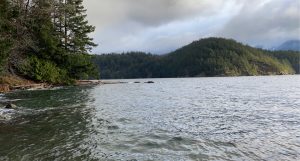Hi there!
Welcome back to another one of my blogs! I am quite enjoying going on this journey through ENGL 372 with you as we discover the importance, forms and methods of storytelling in Indigenous literature. In today’s blog, we will be discussing my first impressions and questions that I have about the Four Old Indians in Thomas King’s novel Green Grass Running Water (GGRW) and what I think their role is throughout the book. Three key points that I would like to focus on about my 1st impressions are how they seem to represent the medicine wheel, interconnectedness and intergenerational knowledge keepers. Within these impressions, I will also discuss how I believe them to be important to the book as a whole.
I would first of all like to say that when I first read the dialogue between the Four Old Indian’s they reminded me of my family and how my Aunties argue about what the right way to do something is! So reading their “chapters” came easily to me. Besides this connection, I also recognized that King chose to have four of them, which I thought was interesting, but not surprising considering it is a book about finding the balance between the traditional and westernized worlds. Four is a very important number to Indigenous people because it represents the 4 directions, 4 sacred medicine and the 4 stages of life. Encompassing these cycles that I listed is the medicine wheel, the medicine wheel is a traditional way of knowing that Indigenous people use to help them live in good relation to the earth and each other.
Furthermore going off of these four points I believe that they represent interconnectedness. The reason why I believe this is that they bridge all the other characters together. Without the Four Old Indians, I would have a hard time connecting all the other characters together at this point in the book. For one example, when Alberta’s student asks what happened to the Indian’s at Fort Marion the next chapter begins with Hawkeye asking what happened to the trees (pg 21). However, my favourite was when the Lone Ranger ends with the quote “what else would you like to know” (pg 49) and Babo begins the next chapter with the exact same line.
Through this interconnectedness, I can see the importance that the Four Old Indians have to the book as they seem to be the knowledge keepers and each of them could represent each of the other main characters (Babo, Lionel, Alberta and Dr. Hovaungh). This representation also sharing the knowledge that they each have with the humans on earth. This also supports the idea that Indigenous elders are the ones who hold the knowledge to share with the younger generations so they have guidance and don’t make the same mistakes as they did in the past.
In conclusion, these are just some of the observations that I have made and are how I am understanding the flow of GGRW. I love reading this book the second time around as I am beginning to see more subtleties that I did not catch the first time. It also helps to have the knowledge base this course provides to analyze this novel!
Talk soon,
Lenaya Sampson
Works cited-
Interconnectedness. First Nations Pedagogy. https://firstnationspedagogy.ca/interconnect.html. Accessed March 19, 2021
King, Thomas. Green Grass Running Water. Toronto: Harper Collins, 1993. Print.
The Medicine Wheel. Windspeaker. https://windspeaker.com/teachings/the-medicine-wheel. Accessed March 19, 2021.

